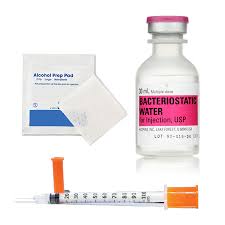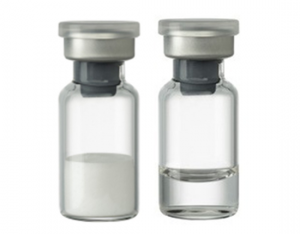Reconstituting peptides. Some easy math.
Getting a fresh batch of peptides can be exciting, but because most peptides are sold as lyophilised powders within a vial, this means you will have to reconstitute your peptide vial with injectable water before it is ready to use. Reconstitution is just a fancy word for “mixing” in this context. In another recent blog, I explained my reasons for choosing bacteriostatic water for injection over other choices. Please read here if you would like to know more about my reasons for choosing bacteriostatic water over other common solvents for reconstitution.
Reconstituting the lyophilised “puck” in your peptide vial is easy. What can be challenging for some though, is working out the mathematics behind how much bac water you need to inject in your peptide vial, and also how much of the reconstituted vial you need to draw out of your vial for each injection. Before we begin, here is a list of the equipment you will need:
– Bacteriostatic water for injection (1 ml for each peptide you want to mix)
– 27-29 gauge insulin needles
– Alcohol swabs
– Your peptide vials

Let us begin with an explanation on how to reconstitute your peptide vial with these easy steps:
1.) Alcohol swab the bacteriostatic water vial and the peptide vial. A good way to remember on what areas to swab, is to remember that any surface that will come into contact with a needle, will need to be swabbed. Allow 20-30 seconds for the alcohol to dry before touching any surface with a needle. Allowing time for the alcohol to dry will prevent infection and the “sting” some users will report when injecting.
2.) 1 ml of bacteriostatic water for each peptide vial is sufficient for all peptide types. You may use more than 1 ml if you wish to make dosing easier for some peptides, but 1 ml of water is a good rule of thumb. It is possible to use less than 1 ml of water for some peptides, but you may run the risk of increasing site reaction or improper reconstitution. After step 1, draw out exactly 1 ml of bacteriostatic water with a fresh insulin syringe from your bac water vial. Then, slowly inject the 1 ml solvent into your peptide vial. Ensure you pierce a hole through the middle of the rubber on the vial to ensure smooth delivery of the bac water to your peptide vial. Please also stay aware that nothing other than the needle should come in to contact with the surface you alcohol swabbed.
3.) Shortly after reconstitution, you will notice that your lyophilised puck has dissolved and the peptide vial appears to be a transparent liquid. In other words, your peptide vial will now just look like water. That’s it. Reconstitution is now complete. I recommend allowing 24 hours after reconstitution before injecting any reconstituted peptides into your body, because it will take a little longer than a few seconds for the bacteriostatic water to kill off any unwanted microbes in the case that there is contamination. To safely store your peptides, store them in a refrigerator, within a sealed container. A chinese food takeaway box (that is clean and dry) will suffice.

See, that was easy. Now for the more challenging part. I say challenging because it may seem that way to begin, but it is really easy. For today’s explanation, we are going to use the peptide GHRP-6 (5 mg) for a hypothetical. GHRP-6 is a commonly used peptide. Also, we will use the unique alias of Bob as the user.
Bob has reconstituted his vial of GHRP-6 (5 mg) with 1 ml of bacteriostatic water. Bob wishes to use 200 mcg of GHRP-6 per injection. Bob needs to figure out how much water to draw from his GHRP-6 vial in order to find a dose of 200 mcg.
– If each vial of GHRP-6 has 5 mg, that is also 5000 mcg because 1 mg = 1000 mcg.
– If Bob’s vial of GHRP-6 has 1 ml, then there is 5000 mcg for every 1 ml.
– If we divide 5000 mcg by 200 mcg, then have 25 x injections of 200 mcg in Bob’s vial.
– If we have 25 x injections in 1 ml, then we can divide 1 ml by 25, which equals 0.04 ml per injection.
– On an insulin syringe, 100 units = 1 ml. We will need to discover how many units Bob needs to draw up to receive 0.04 ml.
– 100 units divide 25 = 4 units.
– So in order for Bob to use a dose of 200 mcg, he will need to draw up 4 units of his GHRP-6 solution per injection.
See, easy stuff. You can apply this same quick math for any peptide.

Add Comment